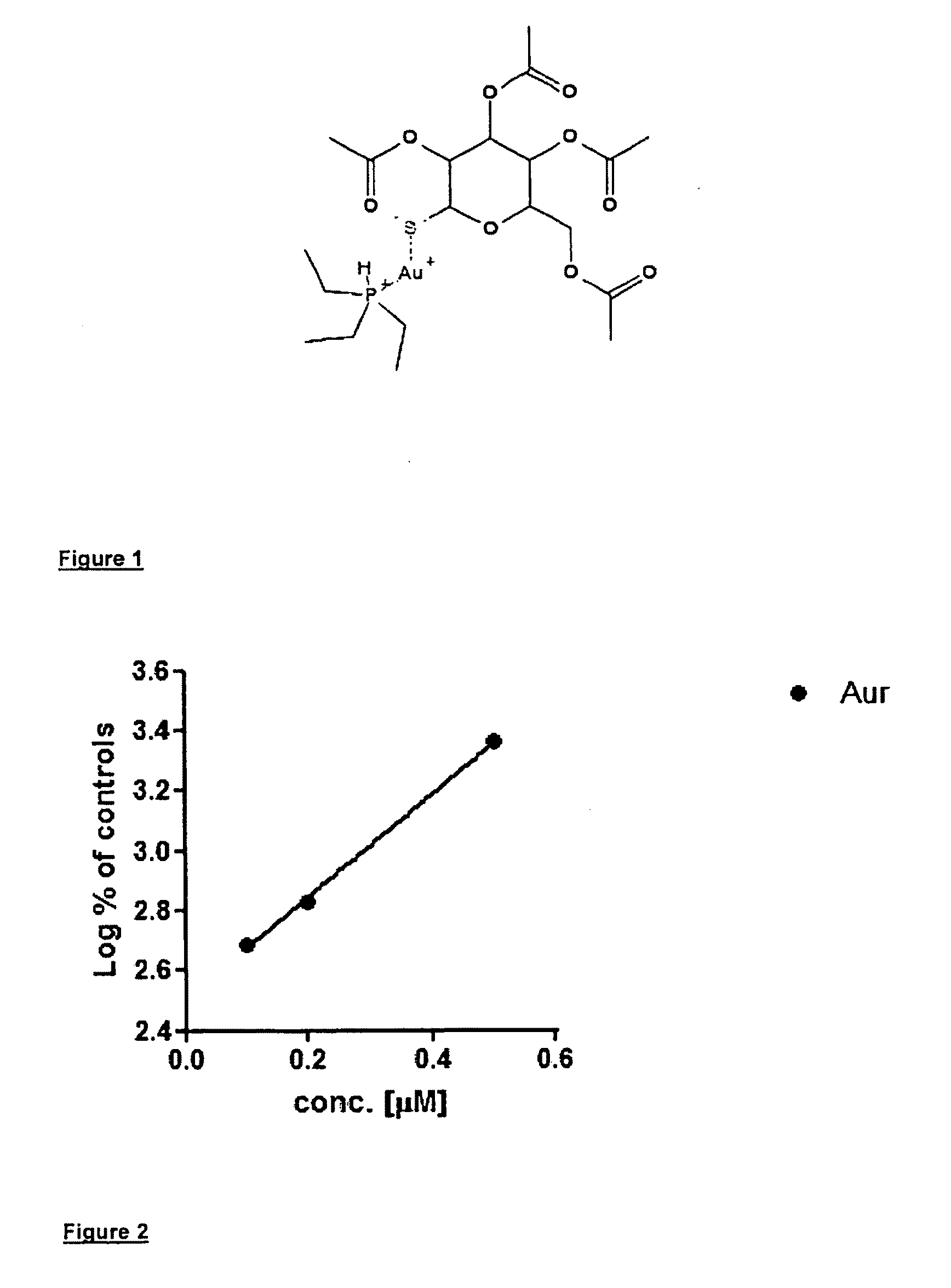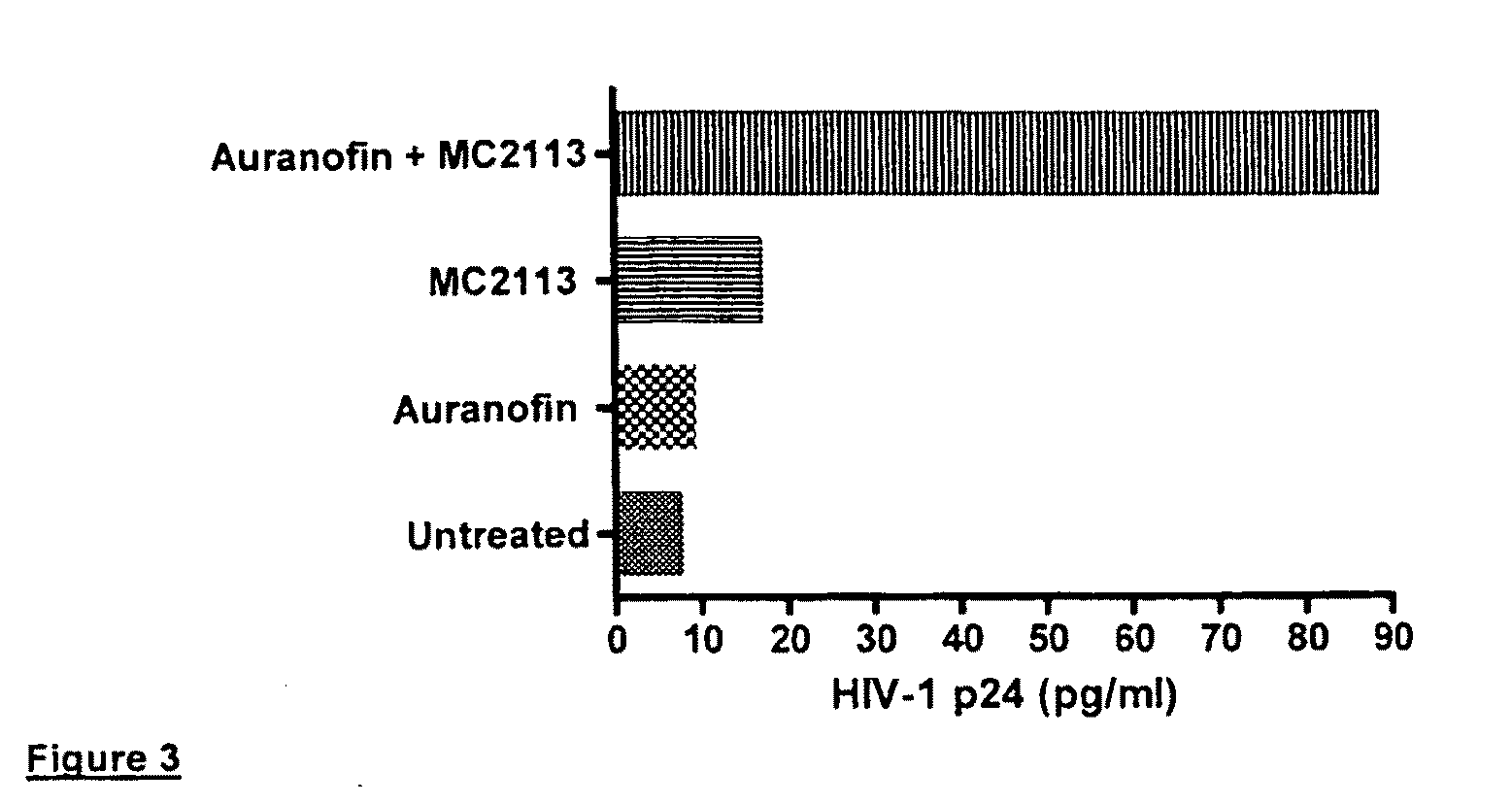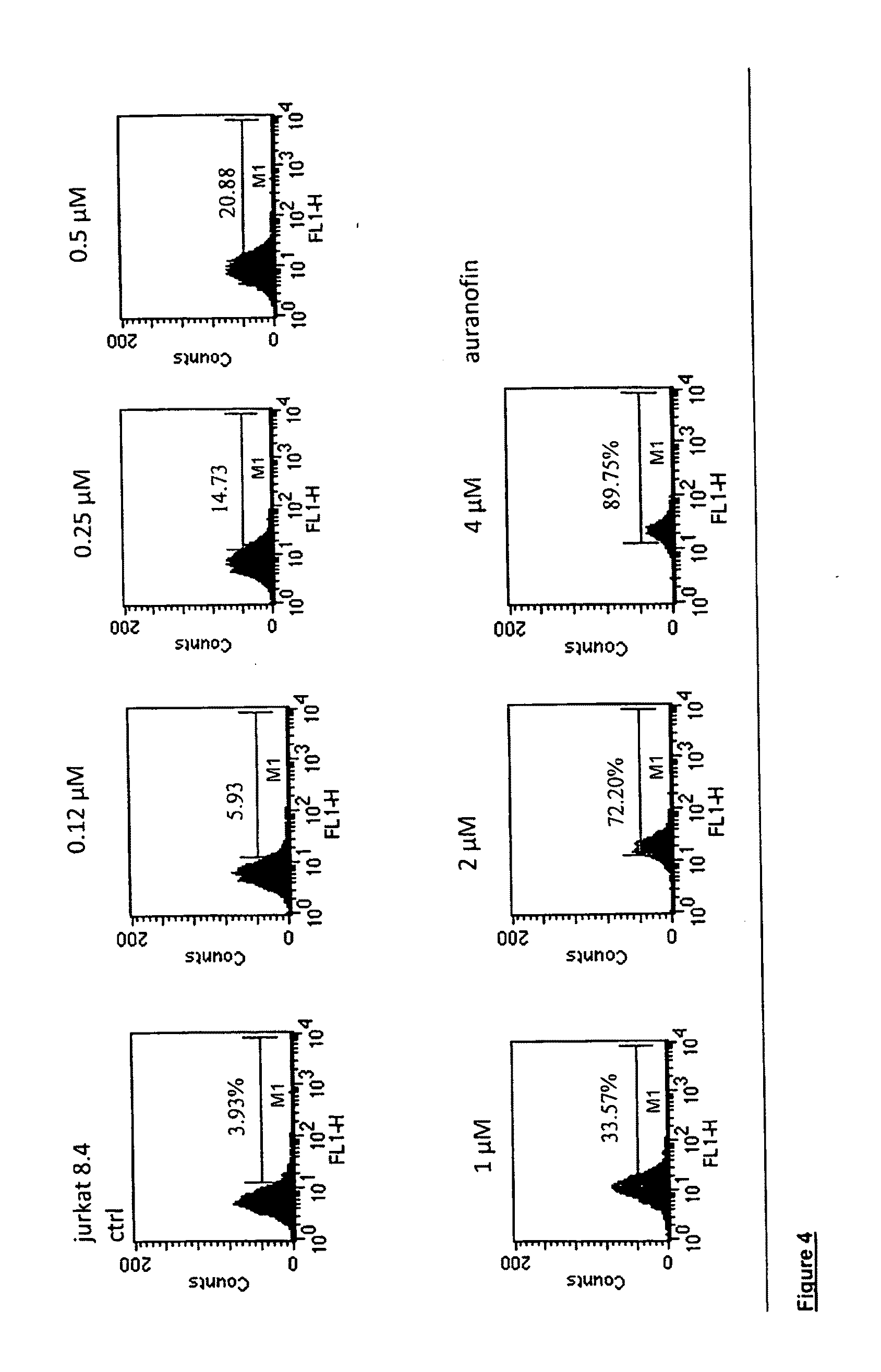Treatment of retroviral reservoirs exploiting oxidative stress
a technology of oxidative stress and retroviral reservoir, which is applied in the field of treatment of retroviral reservoirs exploiting oxidative stress, can solve the problems of toxicity, cannot be targeted cannot be recognized by current antiretroviral therapies (art), so as to reduce the effects of oxidative stress, reduce the effect of toxicity, and induce selective killing of infected cells
- Summary
- Abstract
- Description
- Claims
- Application Information
AI Technical Summary
Benefits of technology
Problems solved by technology
Method used
Image
Examples
example 1
Auranofin
Methods
[0138]HIV-1 induction in ACH-2 and U1 cells. Latently HIV-1 infected ACH-2 cells were incubated with the compounds in 96-well plates under standard culture conditions (RPMI medium, 10% foetal bovine serum / FBS, and proper antibiotics, which were switched from time to time in order to avoid selection of drug resistant contaminating bacteria), and the content of HIV-1 p24 core antigen in supernatants was measured at 24 and 72 h of incubation by HIV-1 p24 ELISA kits (Perkin Elmers, Boston, Mass.), following the Manufacturer's instructions. Cell viability was tested for each treatment after collection of supernatants, as follows.
[0139]Cell viability assay. Cell viability was quantitated using the methyl tetrazolium (MTT) procedure. Absorbance values were generated at a wavelength of 550 nm using 96-well ELISA readers and subtracted of the blank values using cell culture media in the absence of cells. Cell viability in the presence of the test compounds was expressed as a ...
example 2
HDACi's
[0182]HIV-1 infected lymphocytic ACH-2 and monocytoid U1 cells (both displaying low baseline levels of HIV-1 replication) are well established cell-line models for HIV-1 latency [Munier et al., 2005]. They were incubated with the test compounds in 96-well plates under standard culture conditions, and HIV-1 replication was measured at 72 h of incubation by ELISA testing. The potency of the compounds on HIV-1 induction was assessed as the fold-increase in HIV-1 replication in the presence of a standard concentration of 1 μM of the test compound (this concentration is generally used as a threshold for lead compounds selection), as compared to the baseline levels observed in untreated controls. We found several compounds capable of inducing HIV-1 replication in latently infected cells, and, in general, there was good agreement between results in ACH-2 and U1 cells.
[0183]Several compounds (Class I selective or non-selective HDACi) showed remarkable HIV-1 stimulatory activity (Tabl...
example 3
References for Example 3
[0248]Jordan A, Bisgrove D, Verdin E: HIV reproducibly establishes a latent infection after acute infection of T cells in vitro. EMBO J. 2003, 22:1868-1877.[0249]Simon G, Moog C, Obert G: Valproic acid reduces the intracellular level of glutathione and stimulates human immunodeficiency virus. Chem Biol Interact 1994, 91:111-121.[0250]Rahman I, Marwick J, Kirkham P: Redox modulation of chromatin remodeling: impact on histone acetylation and deacetylation, NF-kappaB and pro-inflammatory gene expression. Biochem Pharmacol 2004, 68:1255-1267.[0251]Hamer D H: Can HIV be Cured? Mechanisms of HIV persistence and strategies to combat it. Curr HIV Res 2004, 2:99-111.
Example 4
[0252]Gold salts and arsenicals share a number of biological effects, and are now showing new promise as potentially promising epigenetic metallodrugs with several applications in medicine. Their therapeutic use in other disease conditions has an ancient tradition, of course. Altho...
PUM
| Property | Measurement | Unit |
|---|---|---|
| Volume | aaaaa | aaaaa |
| Mass | aaaaa | aaaaa |
| Mass | aaaaa | aaaaa |
Abstract
Description
Claims
Application Information
 Login to View More
Login to View More - R&D
- Intellectual Property
- Life Sciences
- Materials
- Tech Scout
- Unparalleled Data Quality
- Higher Quality Content
- 60% Fewer Hallucinations
Browse by: Latest US Patents, China's latest patents, Technical Efficacy Thesaurus, Application Domain, Technology Topic, Popular Technical Reports.
© 2025 PatSnap. All rights reserved.Legal|Privacy policy|Modern Slavery Act Transparency Statement|Sitemap|About US| Contact US: help@patsnap.com



